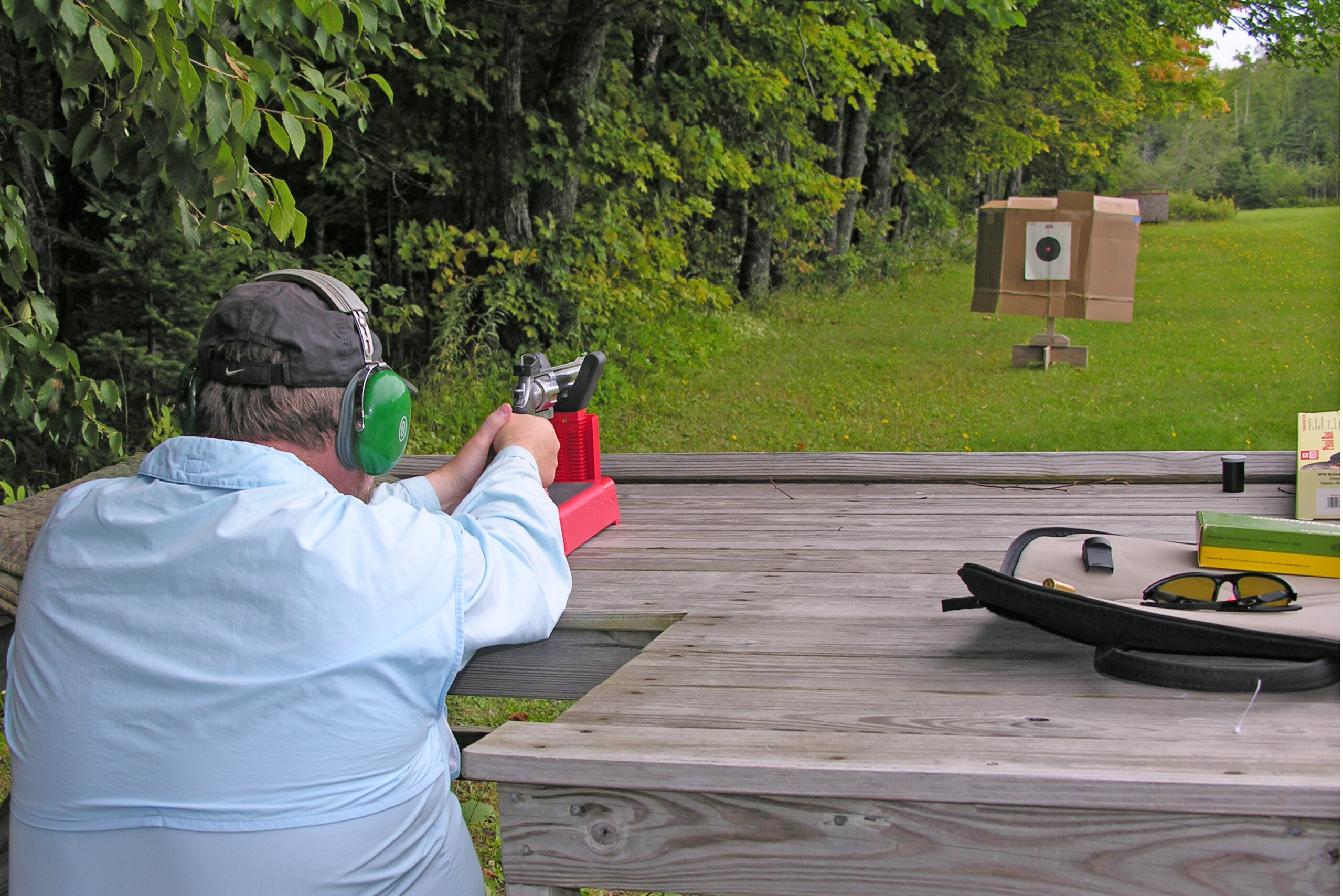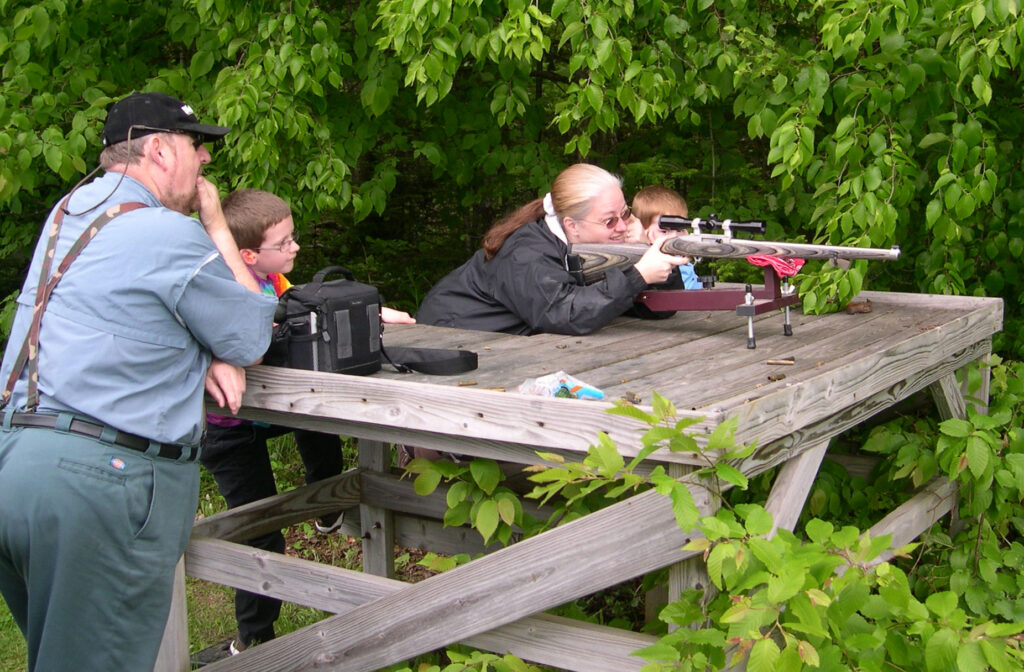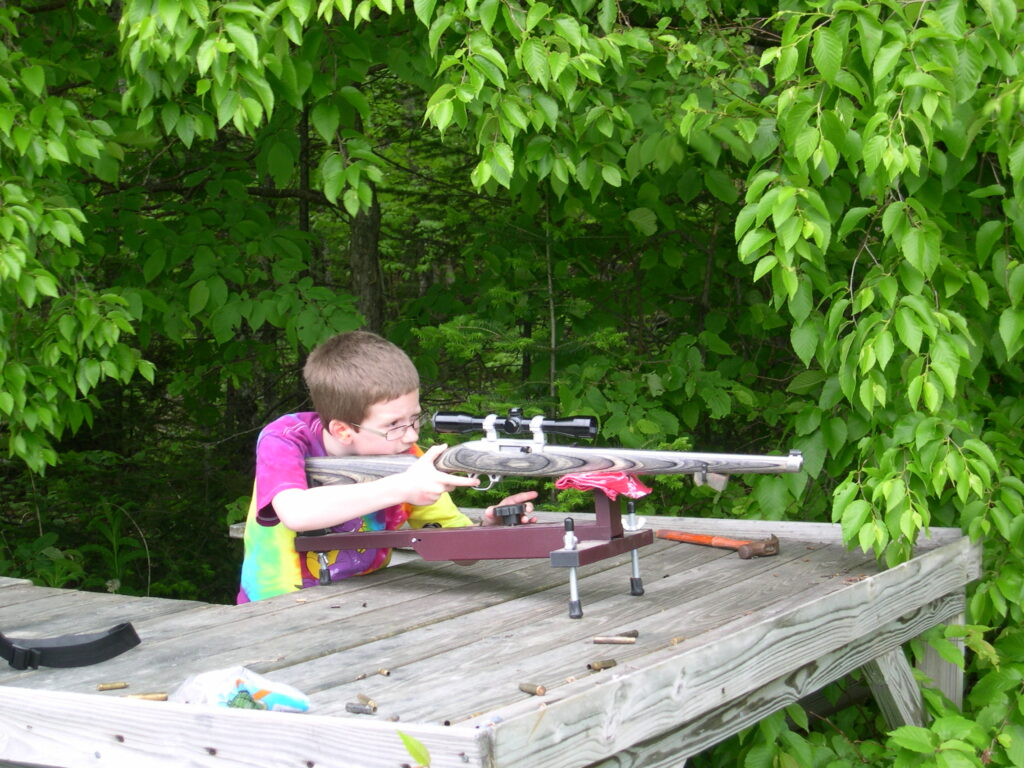
When I was growing up in the early 1960s, there were no mandatory gun safety courses for boys, girls or fledgling adult shooters. Fathers took very seriously their responsibility to educate their sons and daughters on the safety and ethics of proper firearm handling.
The outdoor classrooms were unique, to say the least. The hayfield behind the barn, the family farm gravel pit or the town dump were all popular practice ranges; very few Aroostook towns had actual shooting ranges.
The most popular teaching tool was a much used, but well maintained .22 rifle, often a single-shot or bolt-action model. On rare occasions when progress had been made with the “plinker,” a youngster might graduate to shooting a .22 handgun, a semi-auto .22 rifle or a single-shot .410 or 20-gauge shotgun. I’m sure many “boomer” sportsmen remember the fun and excitement of these initial shooting experiences of their youth.
Throughout the summer I impatiently waited for our weekly hunting trip to the town’s open dump. After hours and on Sundays, the huge rats that ruled the rubbish were fair game for this mighty rodent hunter and his trusty “high powered” .22 rat rifle, along with his guide/gun bearer, Dad. Just as much fun and shooter educational, without really showing it, were trips to a local gravel pit with a bag of bottles, cereal boxes and used cans. Fifty cents would buy a whole box of .22 long rifle shells and a couple hours of family fun.

There are no more rat-infested town dumps to hunt, which is a good thing for the most part, but it’s sad that each young novice rifleman can’t experience it just once. Shooting bottles is a poor idea, but cans and plastic containers are still fair game as long as you carry out what you carry in. Special steel-framed targets that clank loudly, spin, twist or fall down when hit are now readily available and moderately priced, long-lasting plinking targets.
For the least waste and expense, and for ease of transport, use a bag of balloons or tape paper bullseyes to a cardboard box held in place with a block of wood. Although .22 shells are no longer half a buck, they are still reasonable for an afternoon of plinking. A wide variety of short, long, long rifle, magnum and pellet shells can be purchased.
Beyond teaching and maintaining gun safety standards for sports enthusiasts young and old, a plinking outing assures gun handling familiarity that may have waned over the winter. Shooting can be practiced prone, sitting, off-hand or bench rest style, and the proper handgrip, shouldering procedure and sight picture acquisition will become ingrained. When small game or big game hunting seasons arrive in the fall, the small-bore rifle practice will easily transfer to favorite hunting rifles.

Shotgunners need not feel left out, since a box of clay targets and a hand thrower will sharpen wing-shooting skills at the same gravel pit or back field. Many local fish and game or rod and gun clubs throughout Maine offer facilities for rifle, shotgun and handgun practice, and often have competitions, clinics and safety courses right on the premises for little or no charge.
Throughout the last century the .22 rifle or .410 shotgun remain family favorite firearms for inexpensively bagging partridge and squirrels for the pot, teaching youngsters the ways and means of safe shooting, and enjoying an afternoon of plinking competition. If you don’t own a .22 of some sort, you’re missing out on a real fun gun, as well as an inexpensive training tool for all ages of outdoorsmen.
Plinking is a fun way to spend a few hours each weekend with family and friends and revisit some youthful traditions as well.
If I concentrate real hard I can still relive the terrible attack of the Mars Hill Monster rubbish rats of my youth. PLINK — take that, rat!







